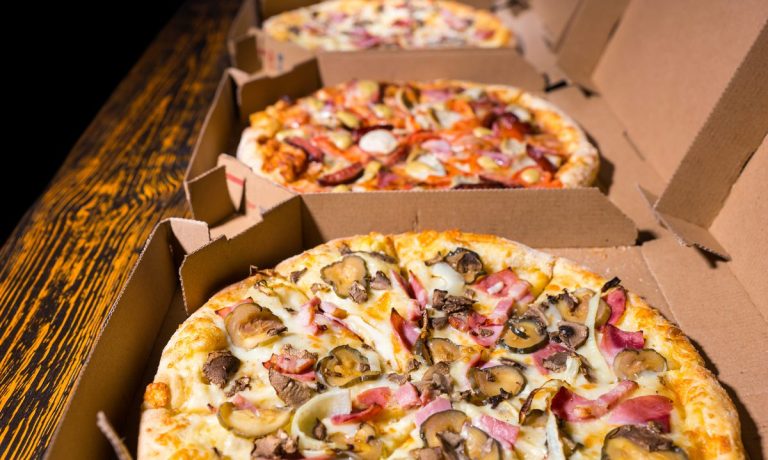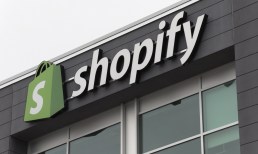Transparency Enables Cross-Brand Synergy for Virtual Restaurants

When consumers browse the restaurant options on third-party marketplaces, they do not always know what they are getting. Sometimes they may see familiar restaurant brands that they have walked by in person, but other times, they may be looking at a virtual brand with no physical storefront.
While many of these digital-only locations are often not labeled as such, consumers are familiar with the virtual brand model, and restaurants that are transparent about their virtual brand initiatives have the opportunity to boost sales across the brands they sell.
Ahmed Omar, owner of Pizza and Wings Express, an Arizona-based five-location chain that prepares foods for a range of delivery-only brands from plug-and-play virtual brands platform Popchew, noted in an interview with PYMNTS that he was surprised by consumers’ familiarity with the ghost kitchen concept.
“Many of my customers were aware of the of the benefits of having virtual brands and were aware of ghost kitchen in general,” he recalled. “When we told them all, ‘We have added a couple of virtual brands to our own business,’ they were saying, ‘Oh, that’s great, so you have more orders, and you can reach more customers.’ … It was a little bit surprising how educated people are.”
The Cross-Selling Advantage
Omar argued that, when customers know which restaurant their virtual brand food is coming from, it can bring fans of that brand in the door, enabling sales opportunities for the brick-and-mortar host. He cited the example of a customer who walked into a Pizza and Wings Express location asking to order from virtual brand Wing SZN.
“Even if it’s a virtual restaurant, it’s part of our brand,” he said. “They know it’s the same restaurant, the same chicken wings that we’re using, but they want that particular brand because of the flavors that they’re looking for.”
Additionally, he noted that consumers call in asking about the virtual brands and their connection to the brick-and-mortar restaurant.
Moreover, as the virtual brands have grown in popularity, it has contributed to the host restaurant’s sales. Omar mentioned that, after an initiative to send out Pizza and Wings Express menus with virtual brand orders, sales increased.
“We’re promoting the app, and we’re promoting the brands that we have by using a direct link or QR code to our menu, so we have more repeated customers,” he said.
The Exclusive
Omar explained that, before working with Popchew, the restaurant had tried out a different virtual brand with a different provider, which ultimately did not work out.
“They used only one third-party [aggregator] to deliver, and they made it exclusive to them at that time,” he said, “so I think the number of people or the number of customers who actually saw the brand on that third-party platform were very limited.”
Indeed, while many restaurant customers order from aggregators, there is significant variability in which marketplace consumers choose. In fact, 1 in 3 restaurant customers order from delivery aggregators each month, according to data from the March/April edition of PYMNTS’ Digital Divide series, “The Digital Divide: Regional Variations in U.S. Food Ordering Trends and Digital Adoption, created in collaboration with Paytronix, which drew from a survey of more than 2,500 U.S. adults who regularly purchase food from restaurants.
See also: New Research Shows That Regional Dining Quirks Matter in Tailoring Restaurant Offers
The study also found that no one aggregator fully dominates the delivery space. Specifically, 71% of aggregator users reported having ordered from DoorDash in the previous 30 days, while just under half (48%) had ordered from Uber Eats and 41% from Grubhub. A range of other smaller players also have a far from negligible share of monthly users.
What You See Is What You Get
Given the degree of removal from the brands inherent to the ghost kitchen model, with no physical location and face-to-face service to build customer relationships, it is all the more important for these brands to maintain customers’ trust.
“A lot of times, when you order online, the food looks perfect in the picture, but when you order … it looks a little bit different,” Omar said.
He added that the restaurant has learned over time how important it is to have the food that arrives at consumers’ doors closely resemble what they saw on the menu.
As the restaurant chain makes virtual brands a more permanent fixture of its future, Omar believes that the next steps are to optimize operational efficiency and fulfillment accuracy.
“I’m very excited to continue to improve on that end, so we don’t lose any orders, we have on-time delivery,” he said, “and I’m not sure if I’m going to add my own delivery drivers anytime soon, but that’s something that I would like to explore: if this can help the business and the brands that we have.”



